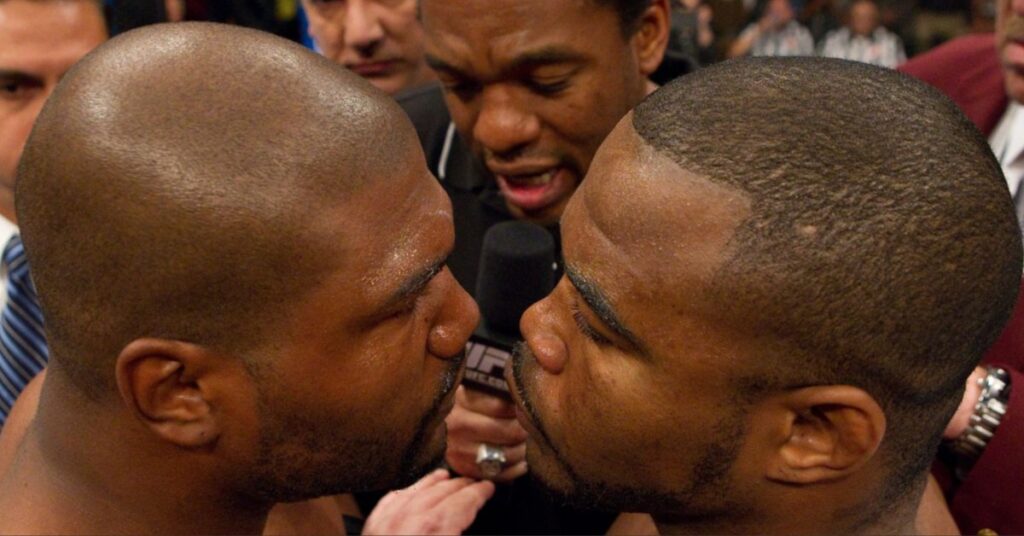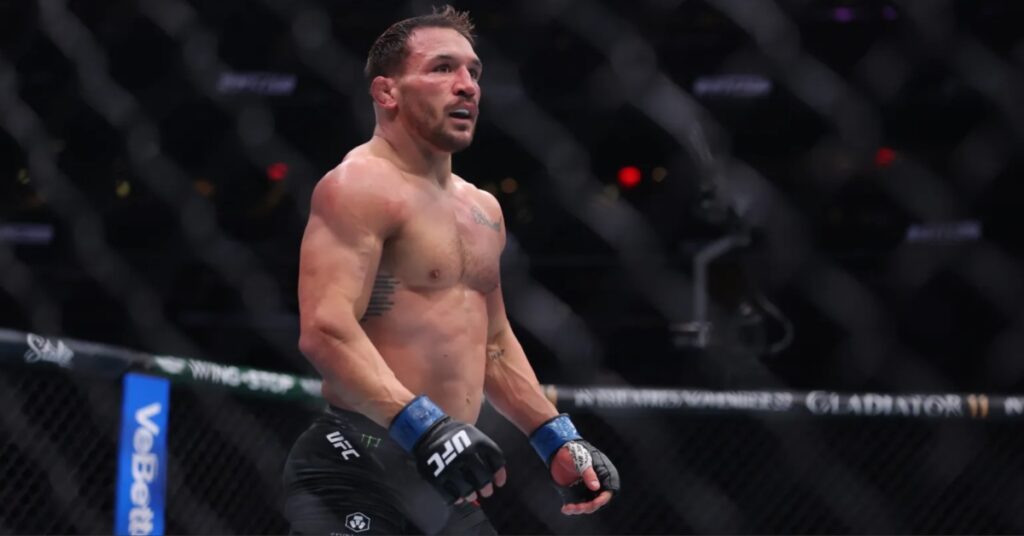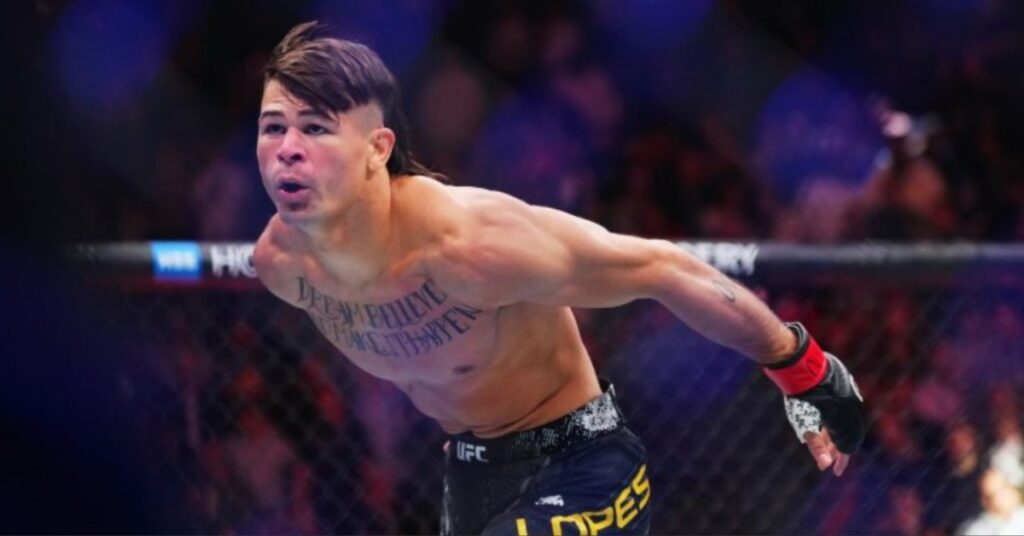BJJ Crucifix Explained
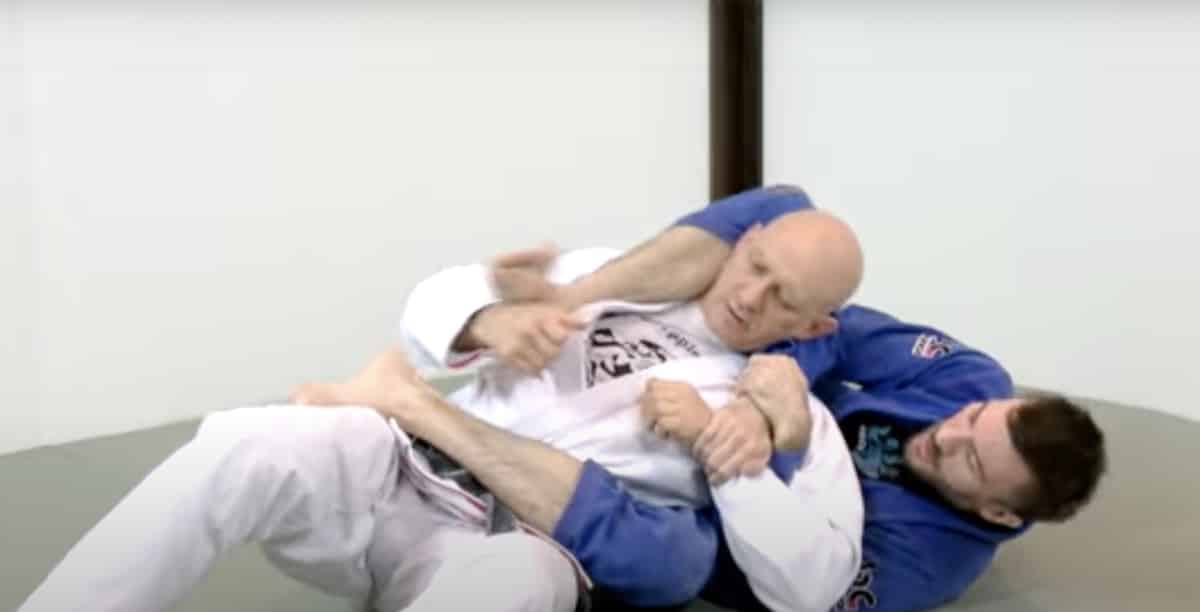
If you have ever been put in a BJJ crucifix position, then you know just how horrible it is. Having both your arms trapped and left helpless against your opponent and leaving them free to do whatever they want.
It’s a position that has many entries to it and even more attack options once you are there. Here is everything you need to know about the crucifix position in grappling/MMA.
We’ll detail how the crucifix works and give you various ways to enter the position along with attacks from there. Then list important tips for making your attacks from there even more effective.
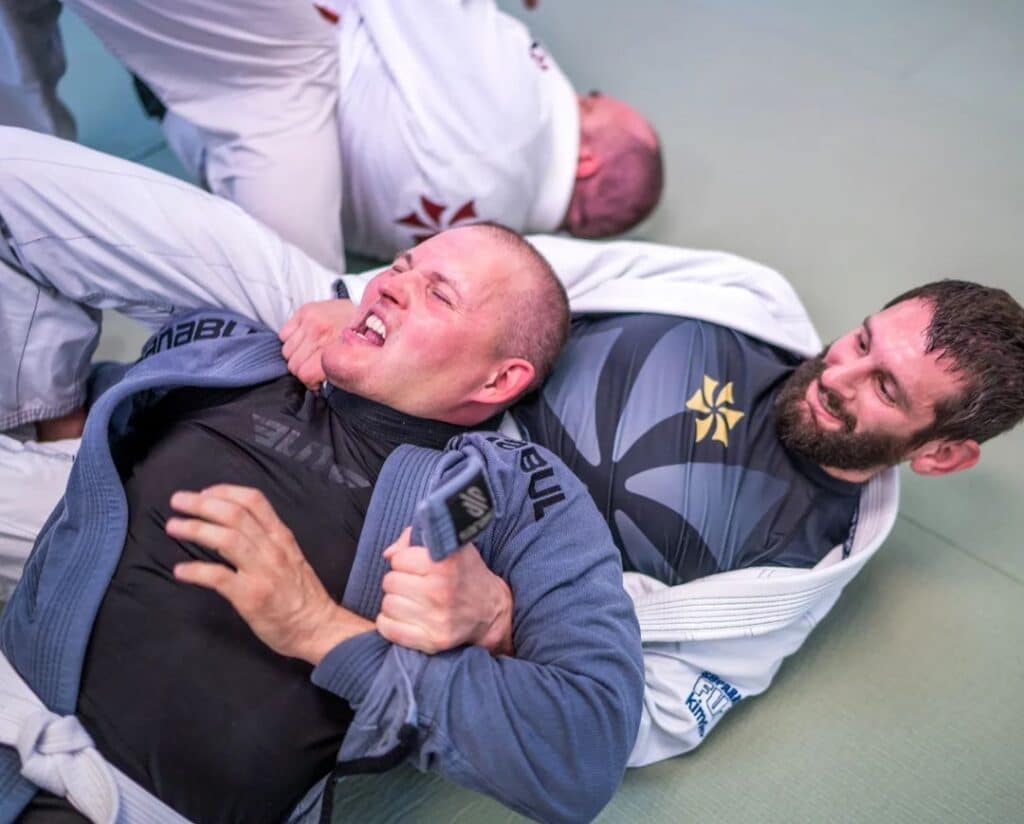
Who created the BJJ crucifix position?
The crucifix position has been around as long as humans have been grappling. It’s basic knowledge that if you take your opponent’s hands away it leaves them open to be finished with various attacks.
Jiu Jitsu adopted the position from Judo where the position is referred to as “jigoku jime”(hell strangle. Although the position is also widely used in amateur wrestling as a method to pin an opponent in a match.
With numerous forms of martial arts utilizing the BJJ crucifix, this proves just how effective it is.
How does the BJJ crucifix work?
It is pretty self explanatory how the BJJ crucifix position works. By trapping your opponent’s arms with your legs and arm it leaves them completely open to numerous attacks.
Their necks are open for strangles or cranks and the arms are open for joint locks. Also if you are doing MMA, you can just simply pound your opponent out like we’ve seen various times.
It is also a position you can enter from various other positions. Either from side-control, back mount, the turtle position, or even off a sprawl.
Probably the most famous use of the crucifix was the UFC debut of Gary Goodridge. Sprawling to defend his opponent’s takedown before wrapping his opponent in a crucifix and then laying down vicious elbow strikes. One of the most brutal finishes in MMA history.
Crucifix setup from turtle
One of the basic entries into the BJJ crucifix comes from when your opponent is on their hands and knees turtling. Before you get into the setup, be sure to keep your chest on your opponent’s back dropping your weight down. Doing this will ensure that they stay in place.
You can either control your opponent using a seatbelt grip or far wrist control. Once you get here, bring your inside knee in between their knee and elbow.
Sometimes your opponent will defend this by bringing their elbow and knee together. If they do this, then bring your knee above these limbs and drive forward to put it in.
From there, you pull off your opponent’s hand and bring your outside foot in to connect it to your inside knee. If you can’t peel their hand out, then you can put your inside knee over their wrist instead.
Then to get the position, you just sit forward and roll right into the BJJ crucifix position.
Crucifix from top side control(MMA)
If you train MMA and love to ground and pound, you must know the BJJ crucifix from top side control.
Before we even go into the crucifix, remember that you need to be controlling your opponent with heavy pressure. Holding the position with control of their head and arm with your chest on their chest.
You’re also driving your shoulder into your opponent’s chin to keep them from turning into you. Once you’ve established ths control, you can go into the crucifix.
It starts by sliding your outside knee across your opponent’s arm. Up and over their arm to pin it to the mat with your shin on top of their arm.
Next windshield wiper your leg over your opponent’s arm and bring your inside leg under their arm. At the same time, you switch your base to more of a kesa gatame side control.
Then just cross your legs and you have a BJJ crucifix free to pound out your opponent.
Crucifix side control variation #1
When you’re holding side control, a common defense your opponent will do is turn away from you. If they do this it opens up an opportunity to go into the BJJ crucifix.
As they turn away, their elbow is on the mat with an open space to slide your leg through. You could also go in to take your opponent’s back if you wanted to.
But for the crucifix, slide your inside knee in and place it right against their arm. This prevents them from closing their elbow.
Next bring your outside foot over the opponent’s arm as you hook their over arm with yours and pull them back. Putting them right into a BJJ crucifix.
Kimura trap to crucifix
You can go right into a crucifix from a kimura trap that starts from top side control. Start the set up by grabbing your opponent’s far wrist and pinning it to the mat.
Now, you’re going to roll over your opponent towards the arm you’re attacking and lock on your kimura grip. Instinctively, your opponent will sit up once you roll over them.
As they sit up, you’re going to rotate your legs around their head. At the same time, you hold their arm to their hip preventing them from completely sitting up.
From here, you could go straight to the back, but you can also hook your opponent’s arm for a nice crucifix.
Back mount to BJJ crucifix
You can go to the crucifix from the back mount in two different scenarios. Either you set it up or you can get it off your opponent trying to escape the back mount.
Start from the back mount and bring your leg over their opponent’s arm to trap it. Then either your opponent will take your hook off to defend or you take it off to go to the BJJ crucifix.
Once your leg hook is off, slide it under your opponent’s back and hook their arm to complete the transition.
Double under pass to crucifix
Another entry to the BJJ crucifix you can do comes off a double under pass on your opponent. With your opponent on their back, shoot in and get double under hooks on your opponent’s legs.
You can either clasp your hands together or palm their far shoulder for control. Either way use one of these grips to stack your opponent and bring their knees to their head.
Traditionally from here, you’d pass their legs to the side and go to side-control. It’s good, but with your opponent’s arm free, they can start attempting to defend your guard pass or back roll.
If they try rolling, you’re going to trap their arm with your leg as you’re passing before they start their roll. With their arm isolated, you let them roll through and go right into a crucifix.
Hold their body with a seatbelt grip to keep them in place.
Short arm drag to bjj crucifix
Here is an arm drag variation that comes from when you’re sitting and your opponent is attempting a pass. It starts from when your opponent grabs your legs and attempts to pull them to the side to pass.
When they do this, reach over their arm and cup their rotator cuff. Using this grip to push your opponent forward as your go off to the side.
Doing this puts you right on top with your opponent turtling on their knees and elbows. If you were lucky, you may be able to hook their arm as you come up going right into the BJJ crucifix.
But if not, you can go into your normal set up from on top in with your opponent in the turtle position.
Tips for doing the crucifix position
The crucifix can be your best position, but there’s little details you need to remember to make it perfect. Here are important tips to remember for holding the BJJ crucifix.
- Get it from anywhere: Remember that you can go into the bjj crucifix from nearly every position. You’re always a few steps away from optimal control over your opponent.
- Stay Tight: Always keep tight on your opponent when holding this position. Holding his loose will give them a better chance at escape.
- No Space: Any open space and your opponent can escape, so always remember to close off extra space.
- 2 legs on 1 arm: When controlling your opponent’s arm, always go 2 legs on 1 arm. Your opponent might have a chance at escaping one leg, but they aren’t escaping two.
- Cross your legs: Always cross your legs around your opponent’s arm, so they won’t be able to slip it out.
Attacks from the crucifix position
We’re going to detail numerous crucifix attacks from both Gi and No-Gi. Then we’ll give you a list of important tips for being more successful with these attacks.
What attacks are there from the bjj crucifix?
A shorter answer would be what attacks you couldn’t do from here. As we said in the previous write up, the bjj crucifix is a position that provides optimal control and various submissions.
Everything from armlocks, chokes, and neck cranks are open for you to set up. In the Gi, various other chokes involving the Gi are available for you to play with.
You can revolve your entire Jiu Jitsu game around getting into the crucifix and attacking from there.
Collar choke from the bjj crucifix
Collar chokes from the bjj crucifix are quick and easy to put on. This set up starts from the turtle position before getting the crucifix and rolling your opponent over.
You can trick your opponent into giving you the crucifix by sticking your leg out to see if they grab it. Your other option is the more traditional set up, where you drive your knee in and fish their arm out.
Once you’ve locked on your crucifix, you’re going to keep it as you do a front roll over your opponent. After landing in position, keep your chest behind your opponent’s head to keep them from hiding their neck.
Then grab the collar and roll your shoulder back as you drive your chest in, and pull the collar for the submission.
Armlock from the crucifix
When you have a bjj crucifix from the back, you can attack your opponent’s arm that you’re holding your triangle on. It just takes a quick adjustment to get into position for this arm lock.
What you will need to do is switch the way you are triangling your legs. Usually, you get into the crucifix from this position by crossing your inside leg over your opponent’s arm.
You could do the arm lock without switching your legs, but your opponent could escape by switching their thumb and rotating. Locking your triangle the other way prevents this escape.
As you switch your triangle, scoot your hip closer to your opponent and triangle your legs above their elbow. From here with your opponent controlled, all you do is lift your hips like a normal armbar for the tap.
Gi choke variation from the crucifix
There is one type of Gi choke that you’ve probably never seen before. For whatever reason when you try to get your crucifix, your opponent won’t give up their arm.
That’s fine, because instead of hooking their arm, you’re going to step over their head. Placing your foot right next to your opponent’s head and grab your own pant leg.
With your grip secure, you roll over your opponent just like a rolling bow and arrow and finish the choke.
Crucifix to kimura
When you go to the crucifix from top control, you can set up an easy kimura from there. Start by holding a heavy top position and underhook your opponent’s far arm.
Next, slide your shin over your opponent’s other arm and then do the windshield wiper motion. Doing this motion switches the control to trapping their arm with your inside shin. Putting your opponent in the bjj crucifix and leaving you free to set up your kimura.
You have already isolated your opponent’s far home, so now step over their head with your outside leg. Now all you need to do is get your kimura grip and crank the arm for the finish.
Kimura to crucifix
On the flip side of the last technique, you can also go to the crucifix from kimura control in side-control. Start by holding kesa-gatame while putting your opponent on their side and staying connected to their back.
Holding this type of side-control leaves your opponent’s near side arm open to lock on a kimura. Go ahead and grab kimura control on that arm and attach it to your chest.
Now instead of going straight to the kimura, you’re going to bring your outside leg around your opponent’s head. Hooking their arm and sitting back right into a top bjj crucifix position.
From here, you can either attempt to finish the kimura or go to another submission.
Short arm choke from the crucifix
From on your opponent’s back holding a bjj crucifix, you can lock up a tight short choke with one hand. For those of you that don’t know what a short choke is, it’s similar to an RNC. You just don’t have the range to get the grips, so you choke more with your forearm.
In the crucifix, reach under your opponent’s arm and grab wrist control like you would in back mount. Now, you have both of your opponent’s hands trapped.
With your free hand, slide your forearm under your opponent’s neck and cup their shoulder. To finish the choke, pull your elbow back and you drive your chest forward.
Top triangle from scarf hold crucifix
When you have a bjj crucifix from top side control, you can hit a move called the scarf hold triangle. This is where you have an underhook on your opponent’s far arm and trapped their arm with your legs.
From here, you use your free arm to push your opponent’s head down. This is to get your opponent to raise their head up.
As their head comes up, push your opponent’s head towards your legs and bring your leg over over their head. Triangle your legs together and squeeze in for the finish.
Crucifix omoplata
When you have your opponent in an omoplata and they defend, this opens up the opportunity for a bjj crucifix counter. You lock in your omoplata and your opponent defends by posturing up.
As they posture up, you put your foot on the mat and start hipping your body slightly out. Doing this makes you perpendicular with your opponent and gives you the space to hook their arm.
All you do to finish the omoplata now is place your elbow on your opponent’s back and keep turning into them.
Baret Yoshida’s assassin choke
Baret Yoshida is a legend in BJJ and a master of the crucifix. He even came up with his own submission from the position that he calls the assassin choke. A choke, where he uses the opponent’s own lapel to strangle them like an assassin taking out their target.
One way he sets it up is from a sitting position as his opponent drives forward. Yoshida hugs around his opponent’s body and lets them drive forward to put them on his back.
As they’re driving forward, he traps their arm with his legs and moves toward his opponent’s back. Now with his opponent trapped in the bjj crucifix, he can now go for his assassin choke.
He takes out his opponent’s lapel and wraps it around his opponent’s wrist to trap it in place. Then, Baret takes out his own lapel and wraps it around his opponent’s neck and starts to lock on pressure.
Tips for attacking from the crucifix position
The crucifix can be one of the most effective positions you can use in Jiu Jitsu or MMA. Here are tips to remember before you start your attacks.
- Position before submission: Always remember submission before submission before you attack from any position and especially from here. Without securing the position first your opponent will get out.
- Crucifix positioning: When holding the bjj crucifix from the back, remember to keep your chest attached to the top of their back.
- Remember to control the arm: Sometimes people get so wrapped up in controlling their opponent’s arm with their leg that they forget the other arm. Remember that you need to firmly hook their arm to really be set in the crucifix.
- Seatbelt grip: The seatbelt grip can also be used to control your opponent’s head and arm from this position. Great for keeping your opponent close to set up your submission.
- Heavy leg: Remember when doing the bjj crucifix from top control in side-control to keep your leg heavy to keep them in place.

